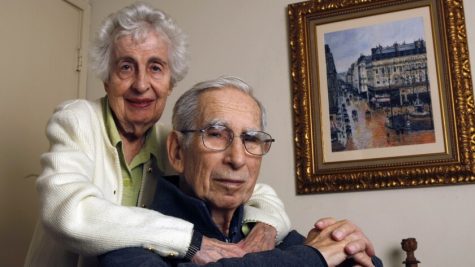A Unique Opportunity For AP Governments Students: Supreme Court Appellee’s Sage Creek Visit
In 1939, Lilly Cassirer and her husband fled Germany shortly before the outbreak of World War II. In this process, the Cassirer’s valuable Camille Pissarro painting, “Rue Saint-Honoré, dans l’après-midi. Effet de pluie,” was taken by the Nazi’s in exchange for a mere $360 and exit visas.
For the next 60 years, the Cassirer family searched for this seized painting as it was passed between collectors and galleries around the world. In 2002 they found the painting in Spain’s Thyssen-Bornemisza Museum. Ever since, the family has been working through the American court system to retrieve their painting.

On September 30, the Supreme Court of the United States decided to hear this case as one of only 100-150 cases they review each year.
Sage Creek’s own AP United States Government and Politics class is expected to cover the Supreme Court later in the year, but teacher Charity Fisher saw this case as an opportunity to get a head start.
Fisher heard about the case in a San Diego Union Tribune article, and after reaching out to the reporter, was able to get in contact with David Cassirer, the great-grandson of Lilly Cassirer, and the man who is taking this case to the Supreme Court.
“What drew me to this case is that it is very hard to receive certiorari [a writ or order by which a higher court reviews a decision of a lower court,]” Fisher said. “I [also] thought…[this case] might grab the artist, it might grab the student who’s interested in law. And also students might feel connected because it was a local story.”
Fisher saw this case as an opportunity to draw her students directly into the Supreme Court process to prompt excitement for the subject.
“It excites students when they feel connected,” she said. “I try to [make class] as high interest as possible…I always ask myself as an educator, how can I make this better?”
Cassirer visited both of Fisher’s AP Government classes virtually, and students were able to listen to his story directly. A few students even got a chance to ask him questions one-on-one.
Nathan Hall, a senior at Sage Creek and AP Government student, was able to ask Cassirer a question about his experience with this case.

“I thought it was really valuable,” Hall said. “I think it taught me a lot about… [how] court cases take a long, long time to get resolved…he started this in the early 2000s and now it’s finally getting up to the Supreme Court.”
Hall was fascinated by how long the Cassirer family has been fighting to retrieve their seized painting. Getting this direct look into how many steps there are in the legal process and how many setbacks there can be intrigued Hall and other students.
Noah Kurima, another of Fisher’s AP Government students, also gained a lot from Cassirer’s visit.
“This whole system’s really complicated, and it’s good to understand, and it’s good that we’re studying [it],” Kurima said. “[After Cassirer] came to talk, I kind of understood how hard it is to actually get to the Supreme Court, and how exciting this whole process is….I think that it gave me a first-hand experience.”
Through getting to speak to someone currently undergoing the Supreme Court process, AP Government students were pushed into the world of the United States Judicial Branch and were also able to get invaluable insight that they would not be able to find anywhere else.

